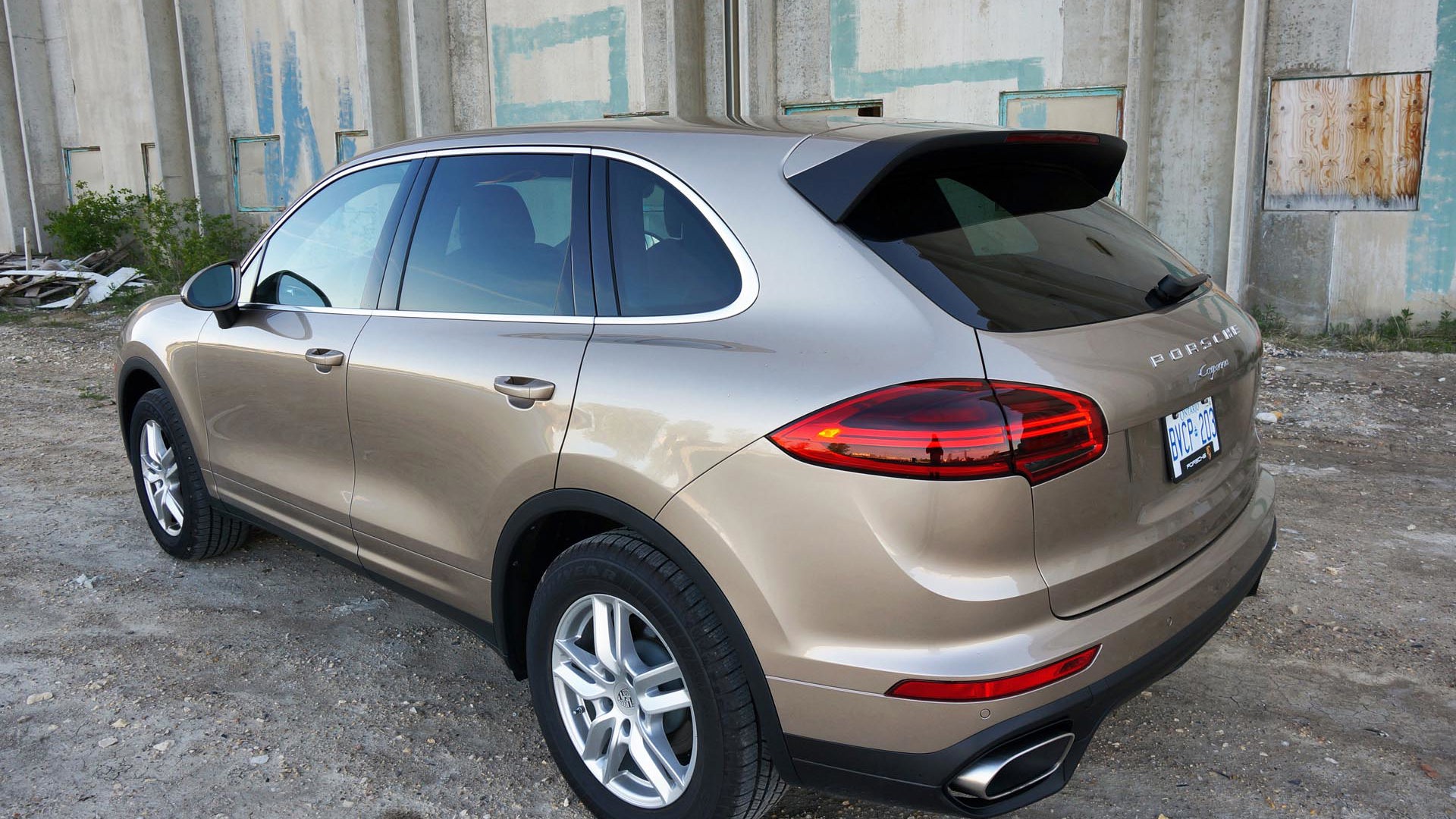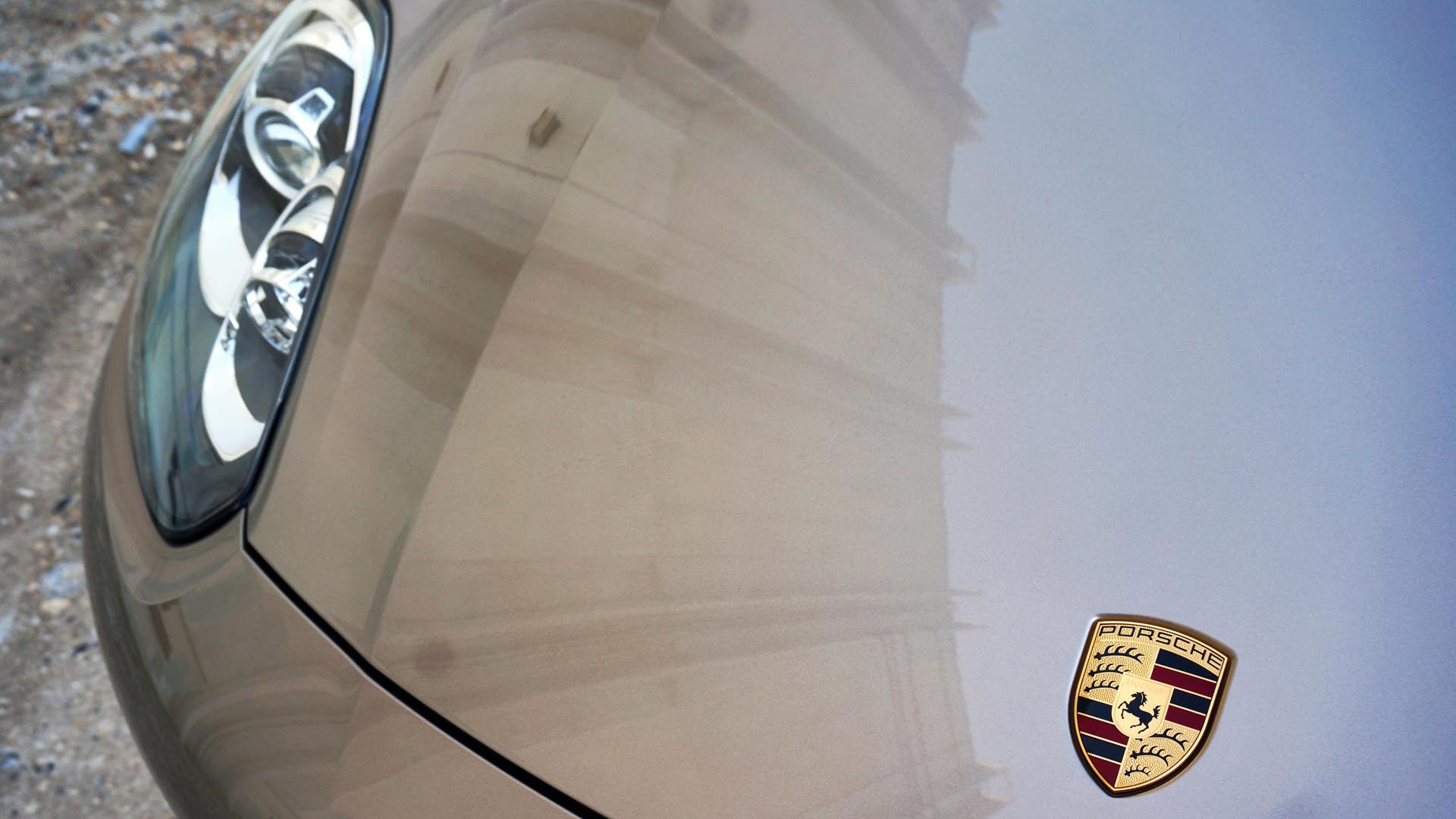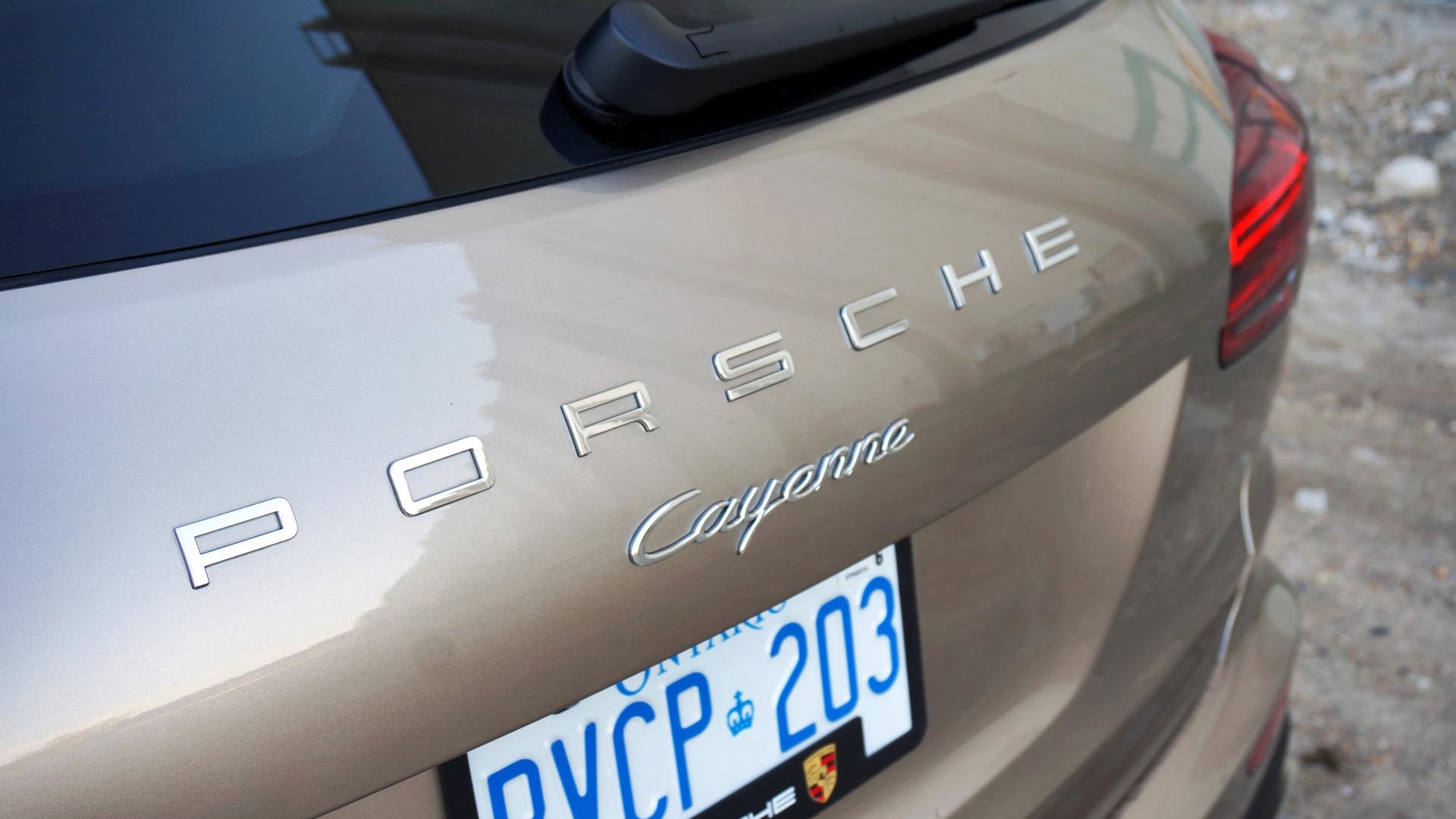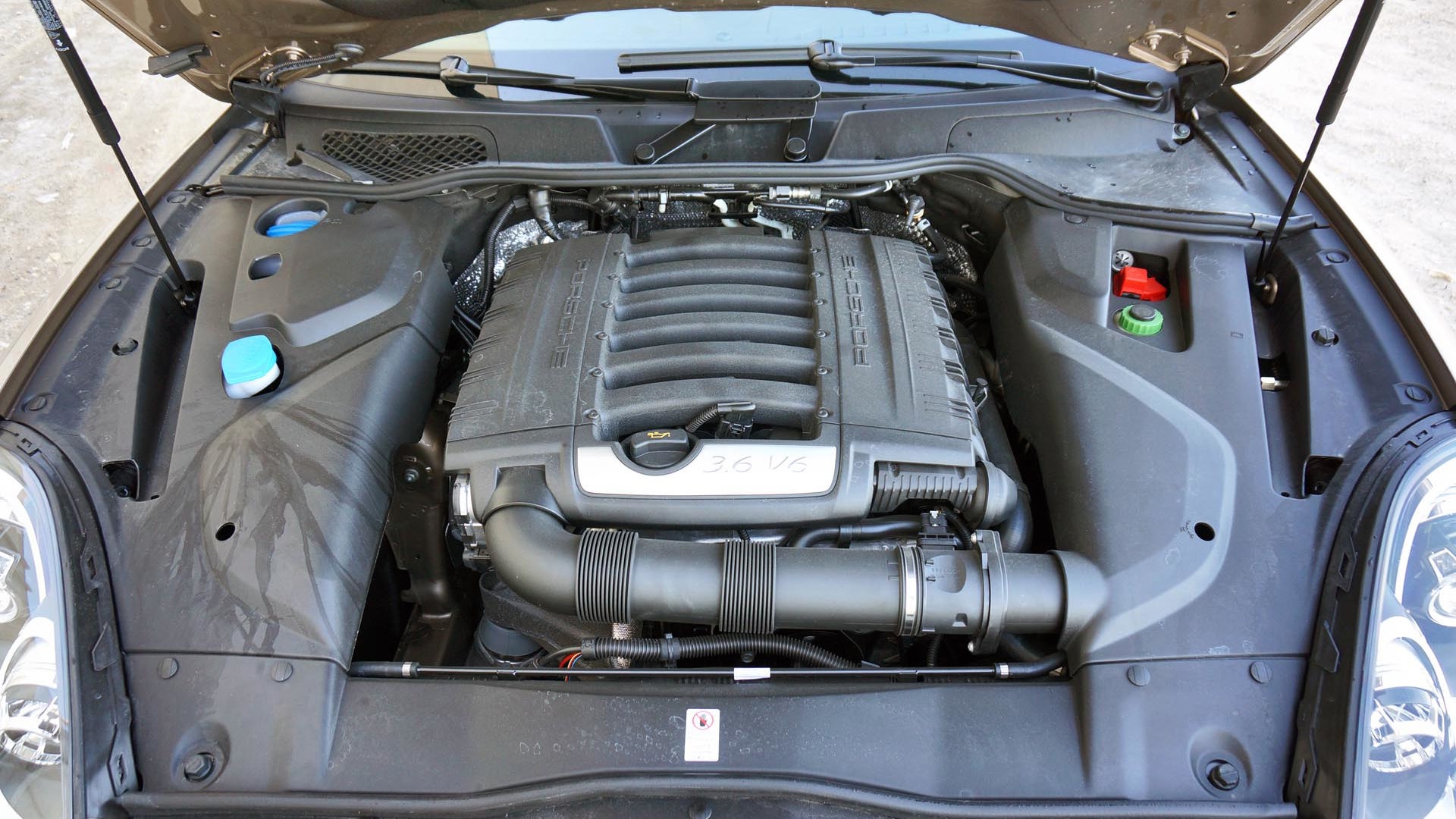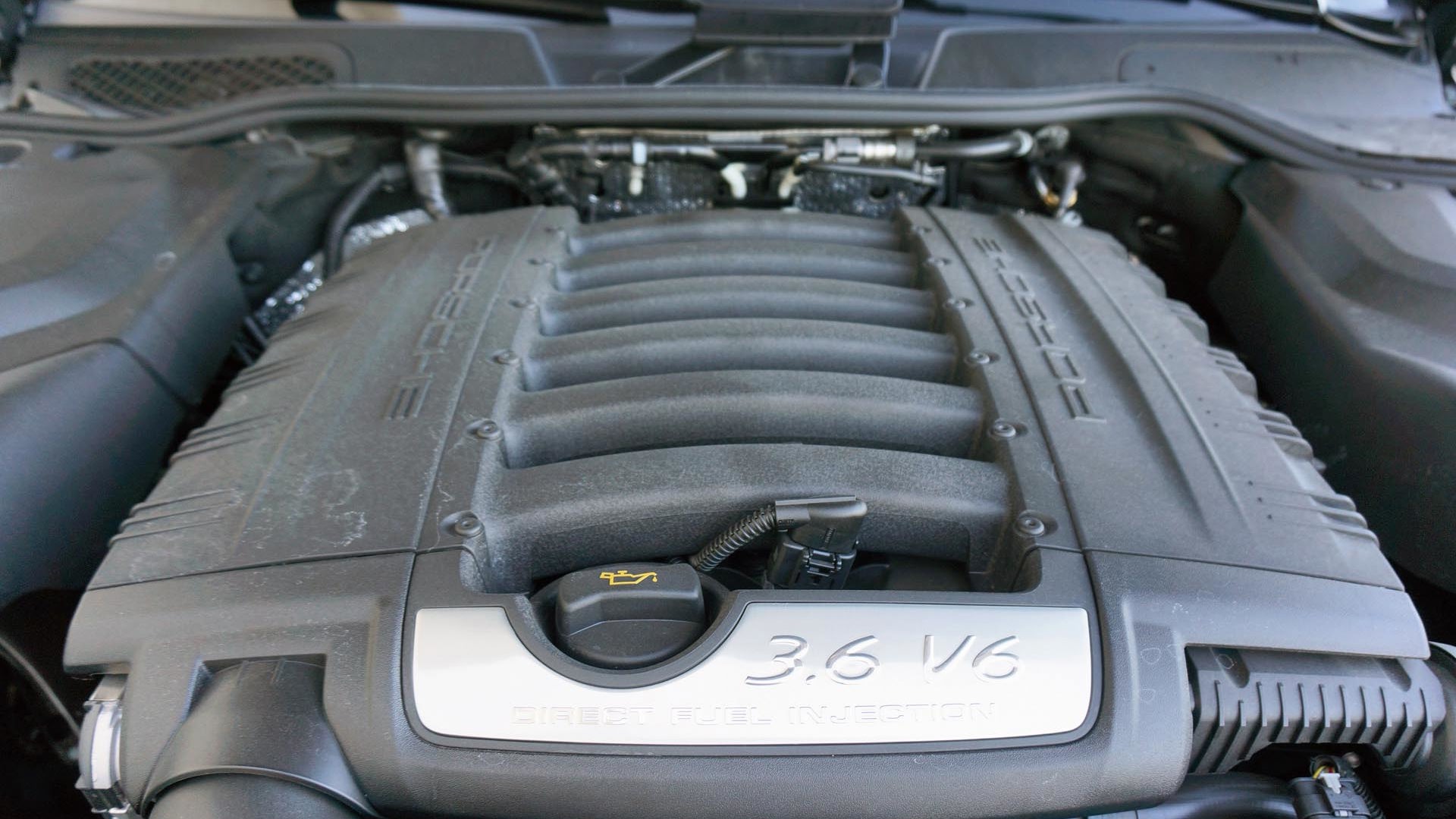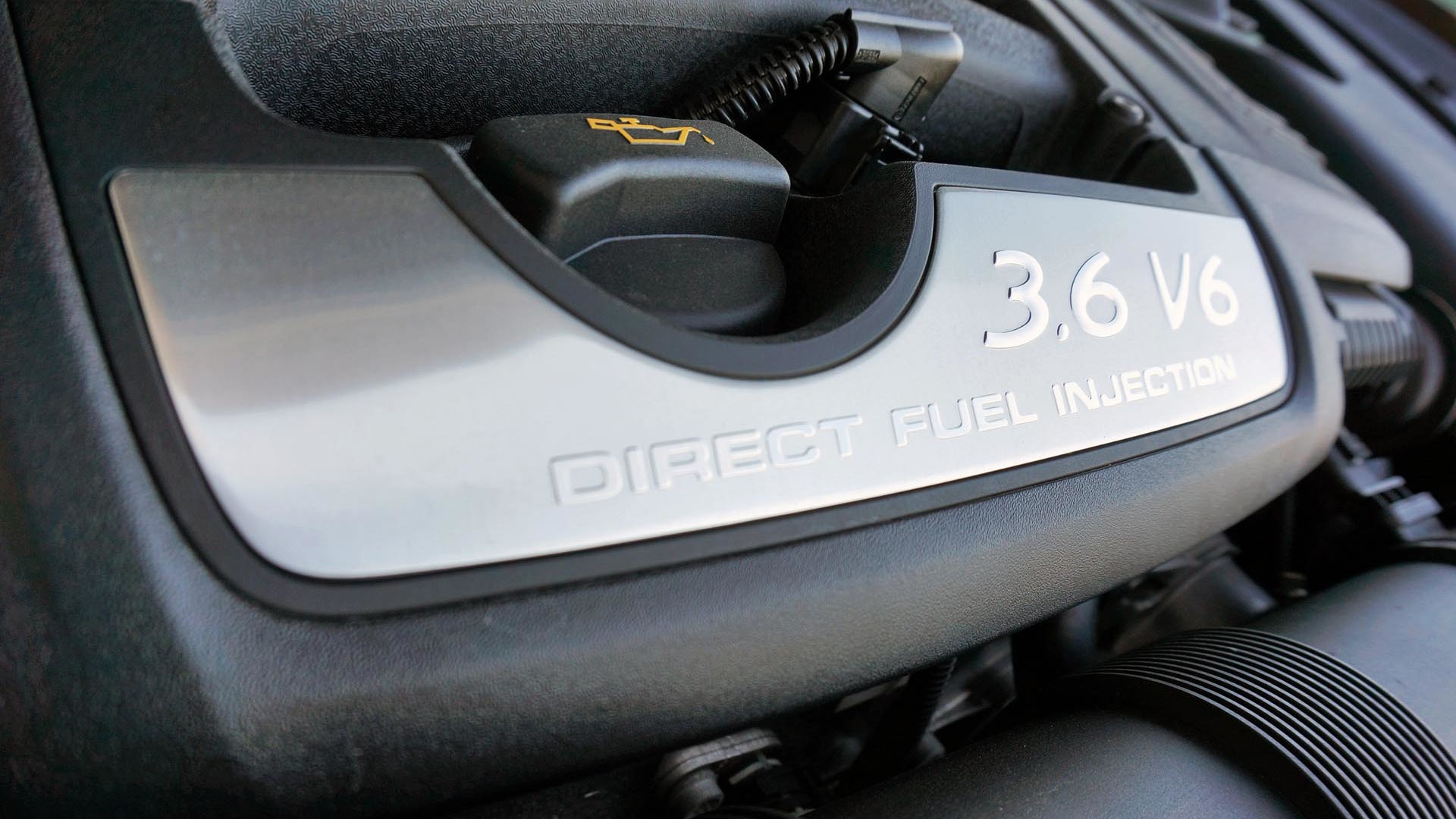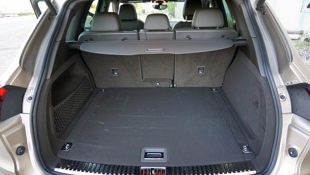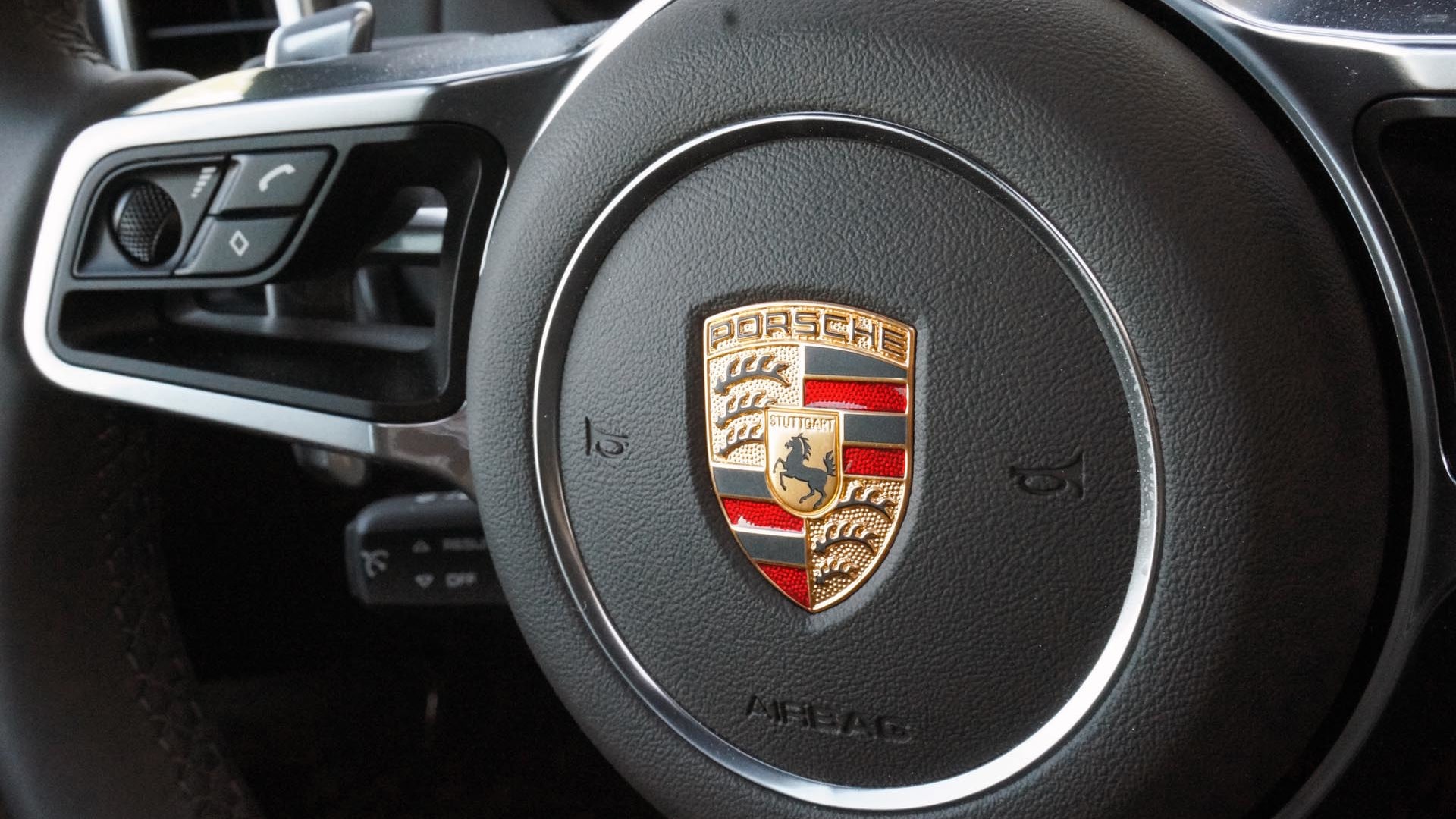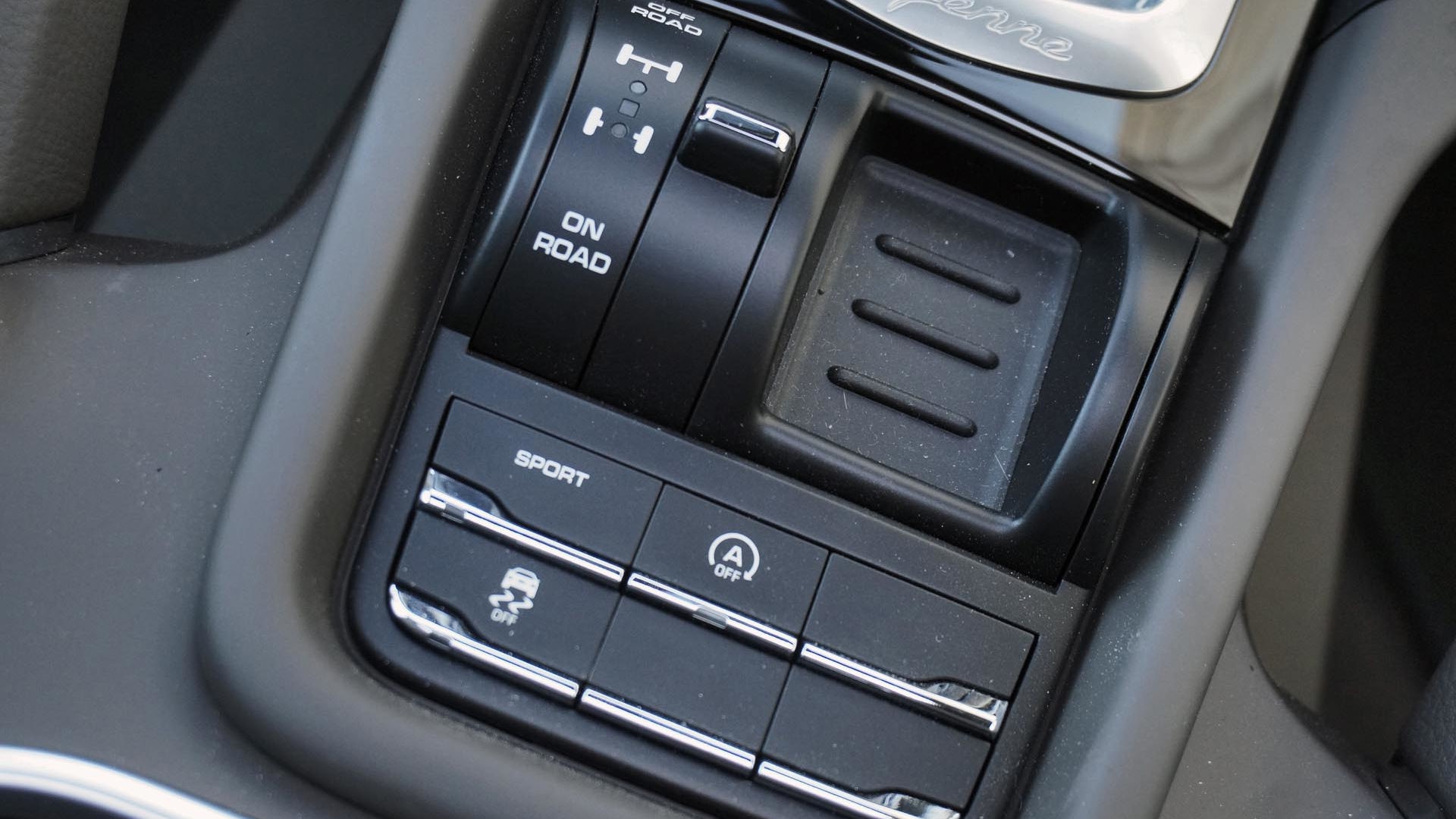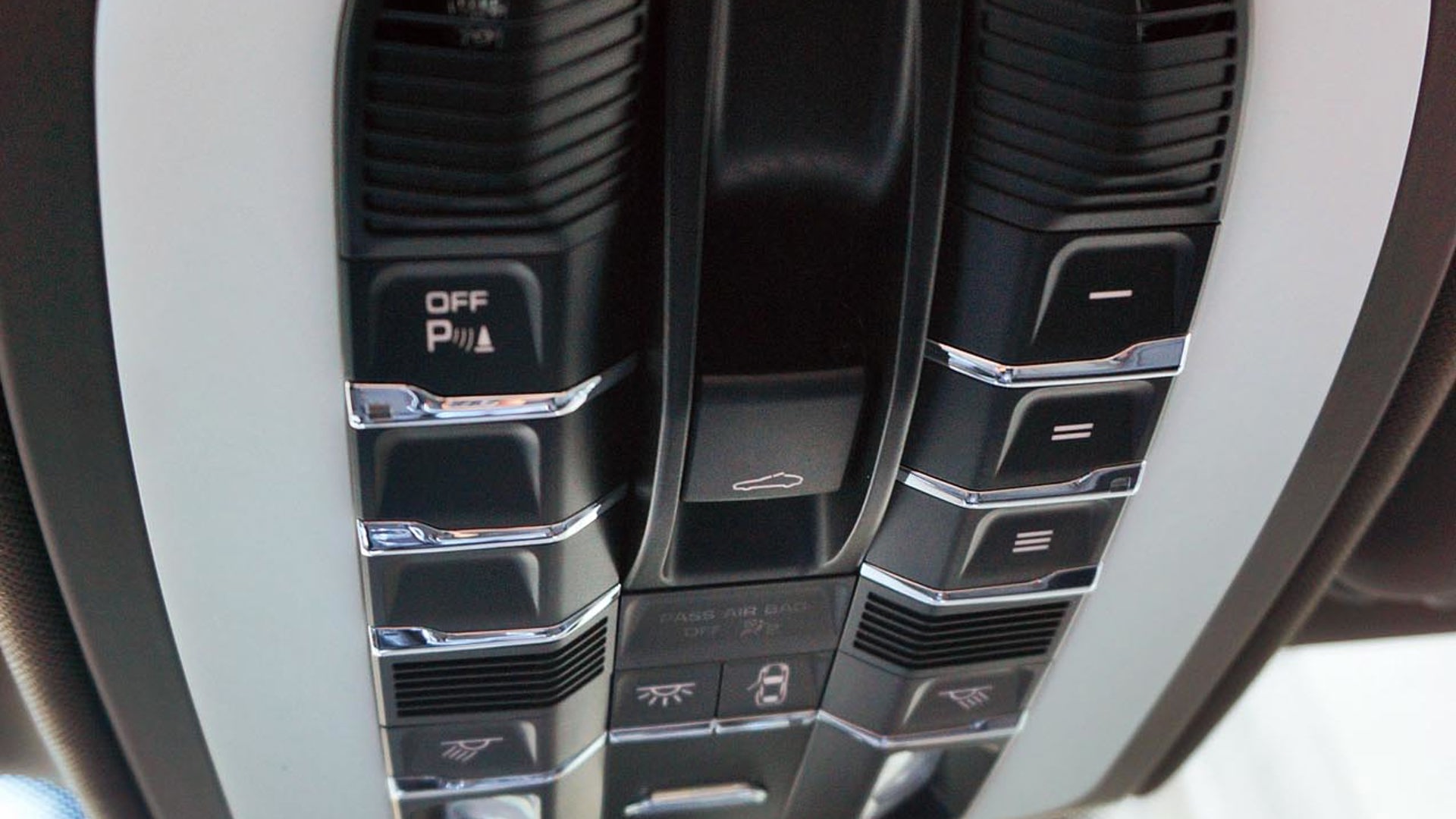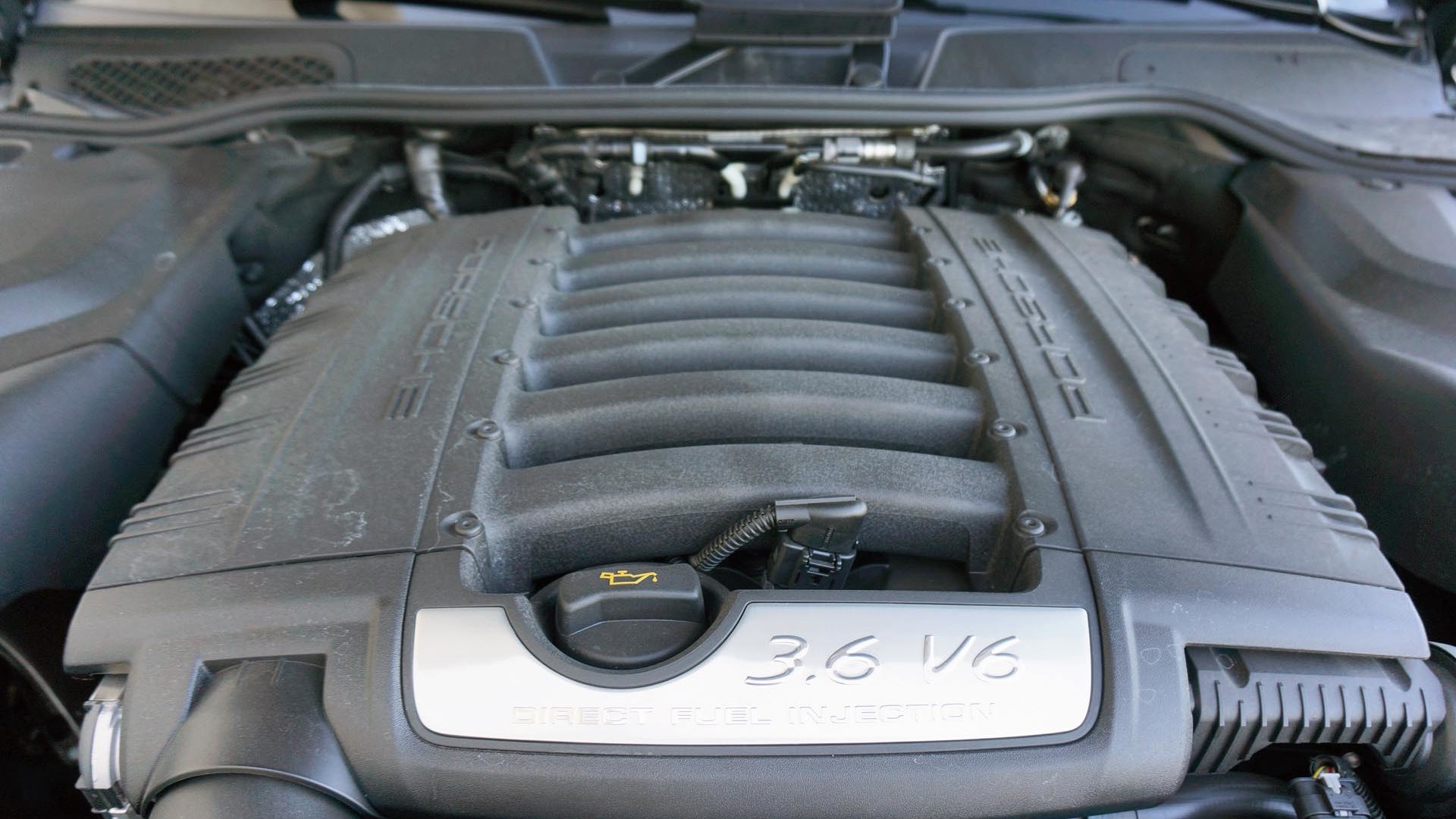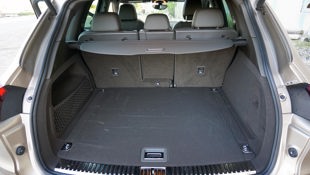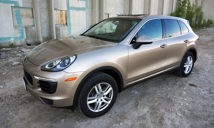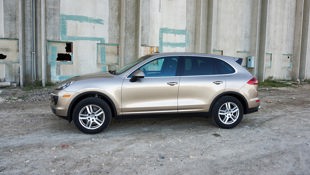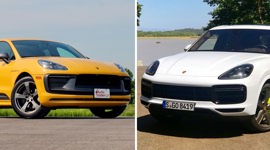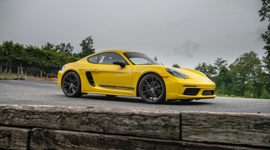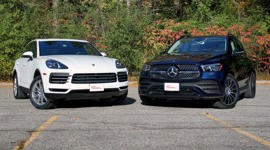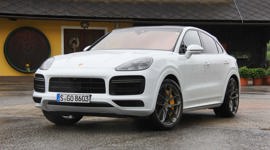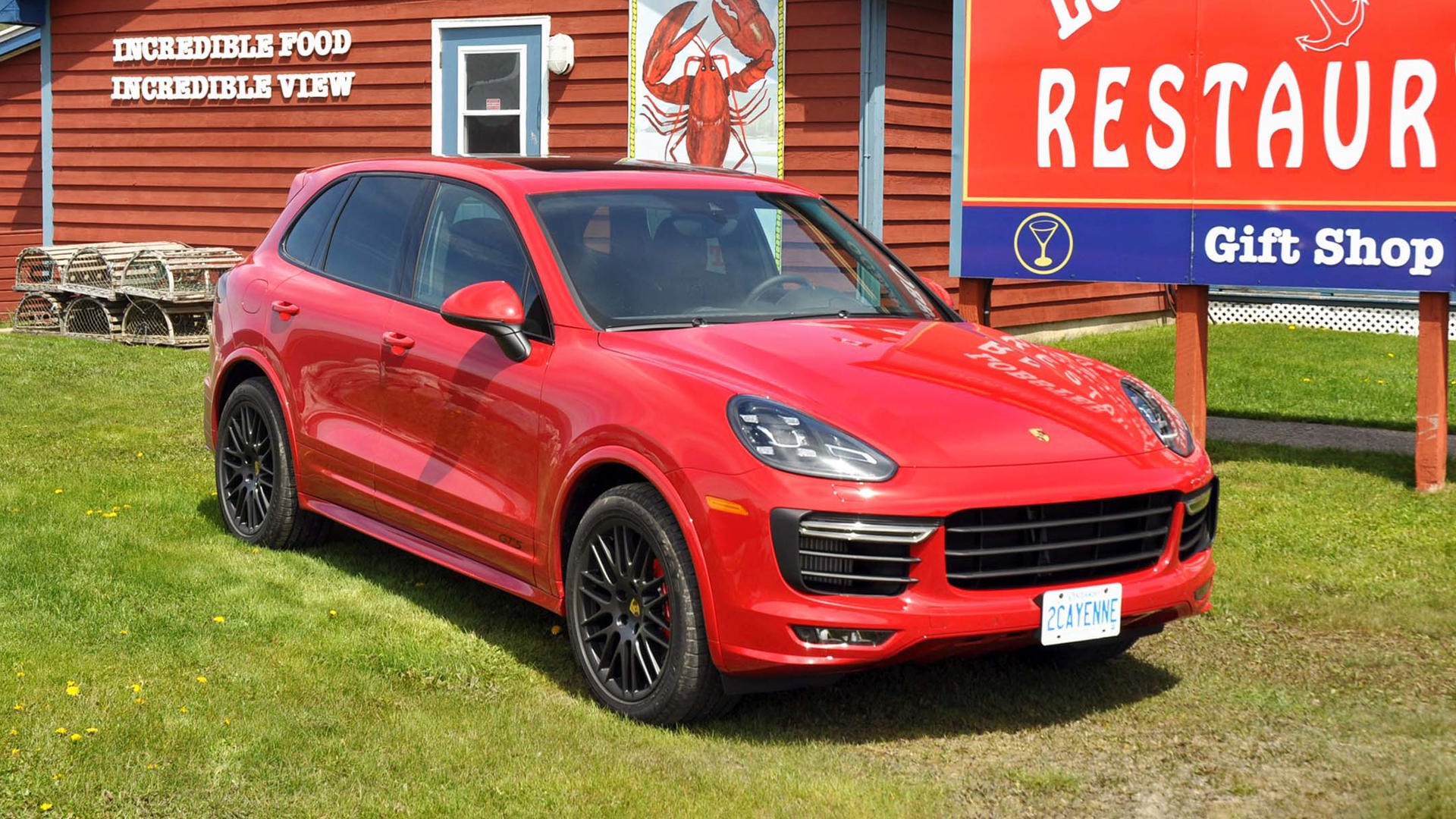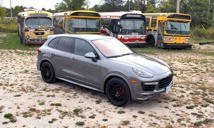We’ve become accustomed to having our Porsche press vehicles arrive with at least a Mustang’s worth of options, but this one is different, and it’s good to know that a lightly optioned Porsche is not the elusive unicorn of the new car market that I believed it to be.
What we have then, on the outside, is a fairly pedestrian looking SUV, plain to the point that my neighbour was surprised to see Porsche lettering on the liftgate.
The Cayenne is the big brother to the most accessible member of Porsche’s lineup, the $57,200 Macan S. It’s a $10K bump from there up to the $67,400 Cayenne, but there’s some good value in that price differential. As a family-friendly driver’s car I’d prefer to be behind the wheel of the Macan without giving it too much thought, but the Cayenne offers more interior space and a stout 3,500-kg tow rating.
For once, since options are few, we have a chance to look at the Cayenne’s collection of standard features. And the list includes items that are generally expected in any crossover north of $50K, with bi-xenon headlights, 18-inch wheels, multifunction wheel with shift paddles, eight-way power front seats and split reclining rear bench, dual-zone climate control, a power liftgate, and Porsche Communication Management (with navigation and a seven-inch touchscreen) along for the ride. There’s also a smoother-than-expected auto start-stop function to minimize fuel consumption in stop-and-go traffic, rain-sensing wipers, a heated steering wheel, and a cooled glovebox.
Porsche has made some real progress in offering such a complete list of standard features. While not unusual at this price, we’re accustomed to seeing Porsche charge extra for items such as navigation or a power liftgate. Plus, not many competitors can claim six-piston front brakes listed with their standard kit.
The folks who outfitted our test vehicle were fiscally responsible indeed. Its Palladium Metallic paint costs $910, the sunroof rings in at $1,360; $2,000 for the reverse camera and parking sensors, and a $450 bump each for 18-inch Cayenne S wheels and a driver memory package. That’s a mere $5,170 in options, peanuts in Porsche-land.
See also: First Drive: 2016 Audi Q7
So, what does that mean for the finished product, knowing there are all kinds of options for appearance, dynamics, technology, and engine output that haven’t been chosen? To start, I wish our Cayenne was clothed in a more interesting hue. Palladium Metallic may sound fascinating, but really it’s just beige, so the Cayenne gets lost in a sea of bland cars in a parking lot. If you build your own online, check one out in Carmine Red with 21-inch Sport Classic wheels. Nice, but that’ll add another $10K to the price.
What we have then, on the outside, is a fairly pedestrian looking SUV, plain to the point that my neighbour was surprised to see Porsche lettering on the liftgate. The Cayenne, in its current form, is a clean design with interesting LED lighting treatments front and rear and a refreshing absence of body creasing to clutter up its profile.
And then there’s the standard Cayenne engine, a narrow-angle 3.6-litre direct-injected V6 (sourced from VW) producing 300 hp and 295 lb-ft of torque. There’s nothing inherently wrong with this engine. It’s smooth and produces enough power to move this 2,040-kg rig with relative ease. But this is a Porsche, and if it were me plunking my money down for one, “enough power” simply wouldn’t suffice. Besides, there are some pretty fascinating powertrains sitting above the V6 in the lineup: a diesel engine with 405 lb-ft of torque; the V6 S model with 420 hp; a plug-in hybrid with a supercharged V6 plus a plug-in electric component that produces combined power on par with the S; a sport-oriented GTS with all manner of performance goodies, and two Turbo models that bring up to 570 hp to the table and easily cost double the asking price of our humble tester.
It’s all part of practicing restraint when you’re sitting at the dealership looking at the immense list of options available to you. So the V6 it is, and really, it’s fine. I won’t gush over it, because there’s no distinctive sound nor is there any particular urgency when stretching it out on the open road. But a zero-to-100 km/h sprint of 7.7 seconds is on par with others in its class; the eight-speed Tiptronic S automatic transmission easily outperforming many of its peers with crisp gear changes and quick response to paddle-actuated shifts.
Customers in this segment demand sophisticated systems in their vehicles, and Porsche is happy to oblige with an all-wheel drive setup that heavily favours sending power rearward for a sportier demeanour. Porsche Traction Management electronically regulates power distribution through a multi-plate centre clutch and electronically locking rear diff that sends power where it is most needed. Drivers have some control over this via a rocker switch on the centre console. A three-stage off-road mode means that the driver can lock the centre coupling and rear differential for more extreme terrain.
An aluminum double-wishbone suspension in front and multilink setup in the rear work with steel springs in this base Cayenne; higher models get adjustable air suspension. But the standard system worked just fine around town, providing a solid balance between sport and comfort. Ground clearance with steel springs is fixed at 215 mm; models with air suspension can adjust this from 158 to 268 mm for varying loading and terrain requirements.
But as capable as these SUVs are, most Cayennes will spend their lives orienteering in the concrete jungle, with the odd unplowed road or cottage trail being the most challenging terrain they’ll see.
What will matter more to Cayenne intenders is how the truck that saved Porsche handles the daily grind. To that end, this hefty SUV generally feels lighter than it is thanks to responsive steering and firm brake pedal feel. While I wouldn’t buy a Cayenne (or anything in its class) to tear up a twisty mountain road, the word “truck” doesn’t ever come to mind from behind the wheel.
The Cayenne’s cargo hold maxes out at 1,780 litres, which won’t compete with seven-seat models like the Acura MDX or Volvo XC90, but it keeps up with other five-seaters like the BMW X5 and VW Touareg (with which it shares DNA) in that regard. Plus it’s well shaped with little nooks and crannies for holding smaller items.
The driving environment is perhaps the most outwardly obvious of the Cayenne’s distinguishing features. The Porsche DNA is undeniable, starting with the marque’s signature five-gauge cluster that greets the driver after sliding behind the wheel. But more unique is the rather intimidating array of buttons within arm’s reach of the driver’s seat. Porsche has been slow to give in to the proliferation of wheel-mounted controls in recent years, but it seems now they’ve relented. Two buttons and a scroll wheel grace each of the Cayenne’s horizontal spokes while the right-sized shift paddles peek out from behind.
Right also describes the shape of the Cayenne’s wheel, suitably thick with perfect thumb rests at 9 and 3 as well as grippy bulges a little higher up for those who prefer 10 and 2.
Contrary to the route most luxury brands have taken, Porsche has graced the Cayenne’s cockpit with a touchscreen and supplementary buttons rather than the otherwise requisite control knob and menu system that others seem to prefer. At first glance, this makes the Cayenne’s (and other Porsche models’) centre console unnecessarily complex, but for me the Porsche way is far simpler to warm up to and allows many functions to be accessed with a single push of a button rather than navigating between screens. Hmmm, less distraction: an interesting concept.
In nearly stripped down form, the Cayenne V6 may not be as special as those higher up in the lineup, particularly in the case of our tester and its conservative duds. But there’s enough Porsche-ness in its execution to offer consumers a serious alternative in the luxury crossover segment.
| Warranty: 4 years/80,000 km; 4 years/80,000 km powertrain; 12 years/unlimited distance corrosion perforation; 4 years/80,000 km roadside assistance Competitors: |
| Model Tested | 2016 Porsche Cayenne V6 |
|---|---|
| Base Price | $67,400 |
| A/C Tax | $100 |
| Destination Fee | $1,115 |
| Price as Tested | $73,785 |
|
Optional Equipment
$5,170 (metallic paint: $910, sunroof $1,360, reverse camera and parking sensors $2,000, Cayenne S wheels $450, driver’s seat memory package $450)
|
|


